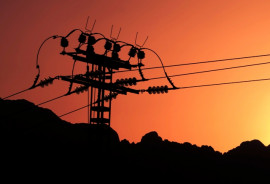
In his epic history of the Peloponnesian wars, Thucydides wrote that what drove Athens and Sparta to a prolonged conflict was “the rise of Athens and the fear that this inspired in Sparta that made war inevitable”. In the Middle East today, the rise of Iran, after years of crippling sanctions, is causing a tremendous amount of concern and fear in Saudi Arabia.
We can look upon the war in Iraq as a turning point in the balance of power in the region: Saddam Hussein, that thorn in the side of the US, was an even greater problem for the Iranian regime. With his demise, a government close to Tehran has ruled over Baghdad. Within just a few months, the Saudi Arabia had a pro-Iranian government on its northern border.
The Arab Spring ushered in further chaos, engulfing Egypt on the western, Bahrain on the eastern, and Yemen on the southern periphery of Saudi Arabia. The only outlet to sea was the UAE in the Persian Gulf and Oman in the Gulf of Oman, where Iranian naval forces have the ability to choke off traffic. If you were sitting in Riyadh in 2011-12, your neighbourhood was in turmoil, and your enemy, already in Baghdad, was making moves in Cairo, Manama and Sana’a. To ensure that Saudi Arabia wasn’t encircled, something had to be done.
Saudi planners were able to hit back as the Assad regime in Syria, a long-term ally of Iran, lost ground in the Arab Spring. A strategic partnership with Bahrain successfully helped crack down on protests in that country. In Egypt, the Morsi government collapsed, allowing Saudi Arabia to pump billions of dollars to cement its ties with the dictatorship of Abdel Fattah el-Sisi.
Over time, the conflicts in Syria and Yemen became a quagmire for both powers. The Saudis have failed to defeat the Houthi insurgency in Yemen, despite months of bombings. In Syria, Iran stumbled to the aid of the Assad regime. Despite an influx of Iranian Revolutionary Guards, Hezbollah militants and ultimately Russian reinforcements, the Syrian war rages on.
By early 2015, the geopolitical situation from both sides’ perspective was a draw, the Saudis were looking in decent shape and their counter-measures had thwarted Iranian efforts to encircle Saudi Arabia. Tehran had also gained ground, achieving a lot during a period of diplomatic and economic isolation. For this, its strategists deserve respect.
And then came the nuclear deal. The signing of the deal in July 2015 upended the delicate balance of power in the region. It set off alarm bells in Riyadh and Tel Aviv, and rightfully so. If Iran could achieve so much in the region while being isolated, it could achieve a lot more as it normalised its relations with the world and got its economy back on track. A new approach was needed to counter Iran. As if the Iran nuclear deal was not enough, collapsing oil prices, coupled with an expensive war in Yemen, saw Saudi Arabia run a budget deficit of over 15 per cent of GDP. With oil prices at below $40 a barrel ($100 is needed to balance Saudi budgets), and no sign of recovery, the government has been forced to cut back on subsidies and raise the price of petrol by 50 per cent. The IMF recently estimated that if current trends continue, the monarchy will run out of cash in five years’ time.
For Iran, oil at $72 per barrel balances its budget, and the country can survive an era of cheap oil for almost a decade, according to the IMF. The nuclear deal also opens up new avenues for trade and investment, and over $100 billion of Iranian assets will be unfrozen in the coming months. All of this only supercharges a regime that has learnt to grind it out during tough times.
Iran rising. The Saudis fearing. Thucydides, centuries later, proving his point.
What is most dangerous about this escalation is that the status quo has been stretched to the limit. The Russians have already made their move, angering Turkey in the process. Ankara had already been infuriated by the rising power of Iraqi and Syrian Kurdish militias, leading Erdogan to abandon the peace process with the PKK and initiate a military campaign against the group in Turkey.
The US and the European Union, alarmed by the refugee crisis and the rise of the Islamic State, do not see the Assad regime as the immediate enemy, at least for the time being. This situation could lead to an Iranian victory of sorts in Syria, while the conflict in Yemen drags on. In 2016, Iran could emerge as the stronger of the two regional powers.
All of this brings us to the execution of Sheikh Nimr al-Nimr, which has angered Iran and has drawn it into a direct confrontation with Saudi Arabia. Saudis are still economically and militarily more powerful, at least on paper. Iran is surely going to come closer to achieving economic and military parity with Saudi Arabia in the near future — might as well draw it into a conflict before that happens.
Not only does Riyadh have the military advantage, but it could, using its extensive PR network, paint Iran as the provocateur and try to isolate Tehran diplomatically. For obvious reasons, Saudi Arabia will also have Tel Aviv and Ankara on its side — both sides would want Assad out and Iran weakened for their own national security interests.
The Iranians seem to have recognised this ploy, and President Rouhani unequivocally condemned the attack on the Saudi embassy in Tehran. Iran is not taking the bait, at least for now. How long this lasts for remains to be seen. But one thing is for sure — the theme of 2016, at least in the Middle East, will be the fear of a rising Iran.
Published in The Express Tribune, January 8th, 2016.
Like Opinion & Editorial on Facebook, follow @ETOpEd on Twitter to receive all updates on all our daily pieces.

1719211536-0/BeFunky-collage-(81)1719211536-0-165x106.webp)






1729685382-0/Untitled-design-(57)1729685382-0-270x192.webp)











COMMENTS
Comments are moderated and generally will be posted if they are on-topic and not abusive.
For more information, please see our Comments FAQ